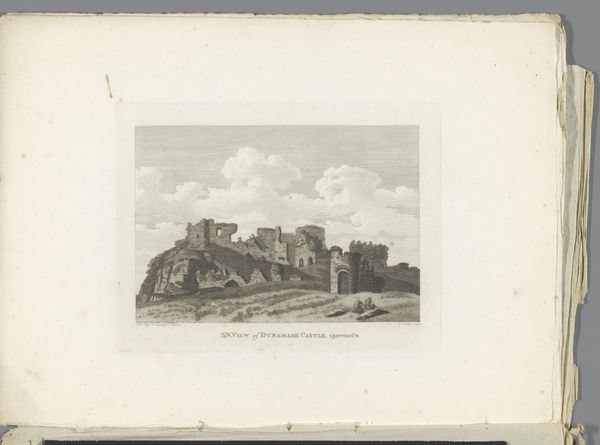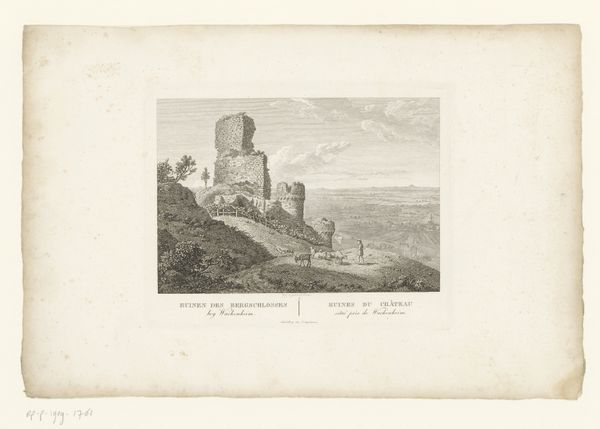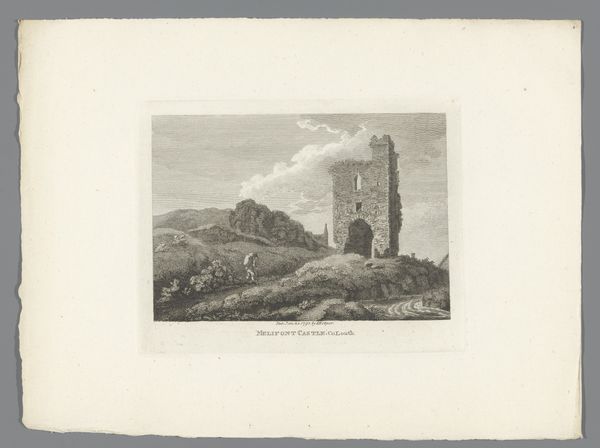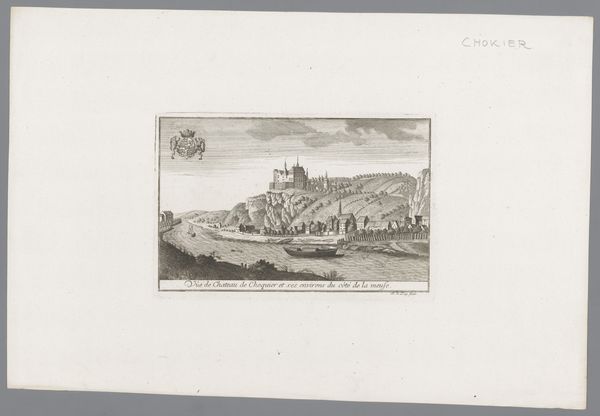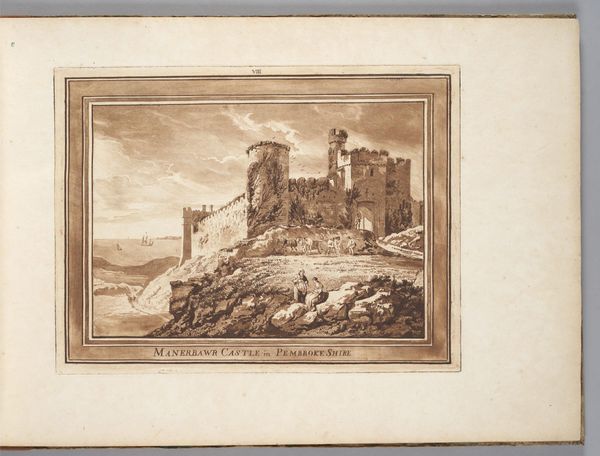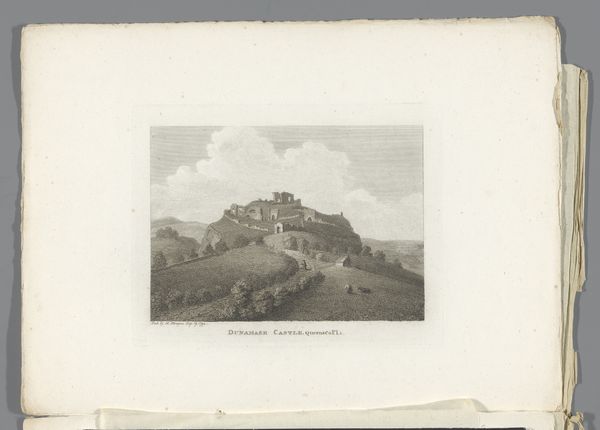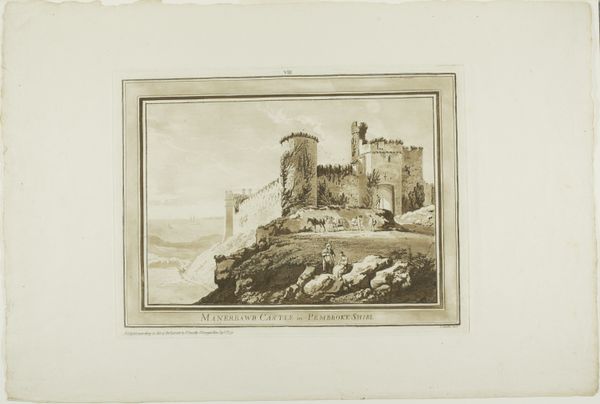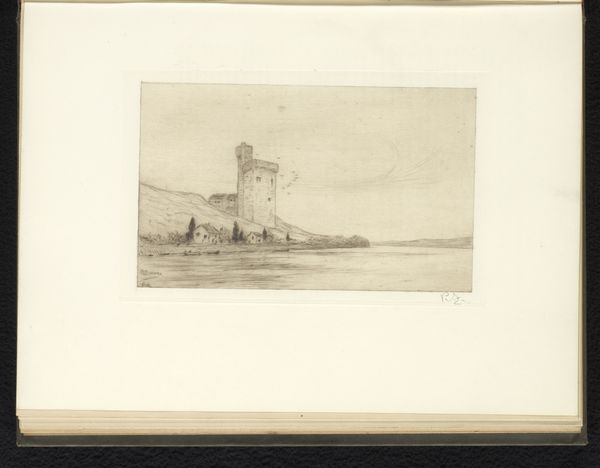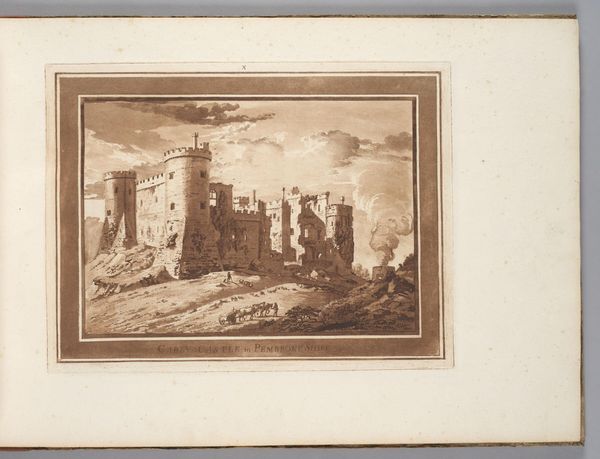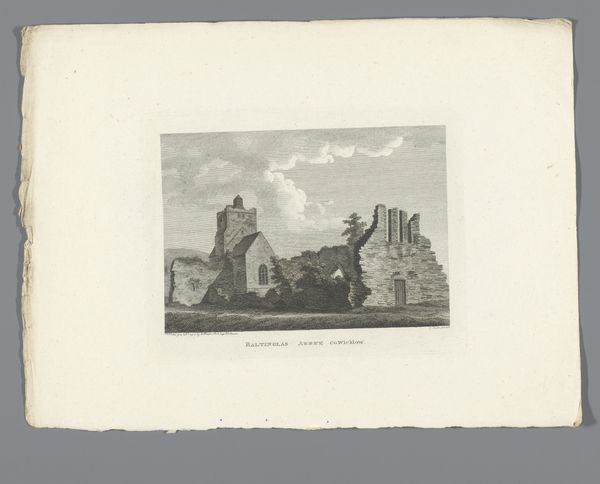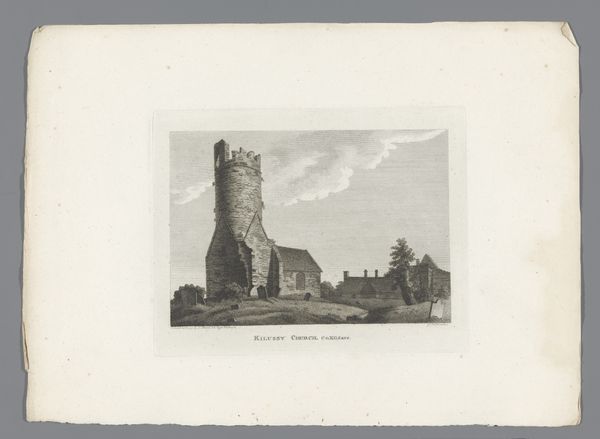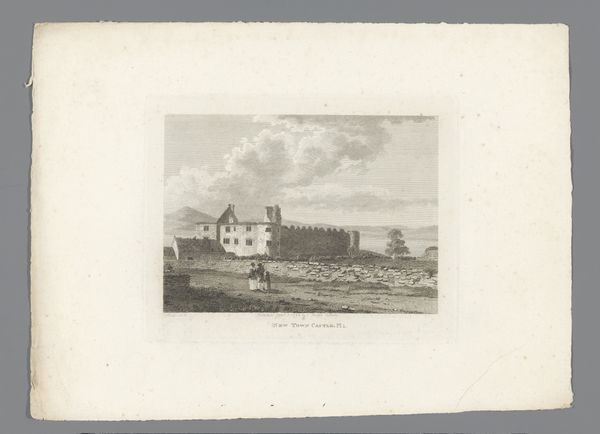
drawing, print, paper, ink
#
drawing
# print
#
landscape
#
paper
#
ink
#
cityscape
Dimensions: height 152 mm, width 200 mm
Copyright: Rijks Museum: Open Domain
Editor: So, this is an ink drawing, maybe a print, entitled "Gezicht op de ruïne van Arklow Castle," possibly from between 1794 and 1797. The somber tone of the print, with the ruined castle overlooking the landscape, really strikes me. How do you interpret this piece? Curator: It’s a fascinating document of its time. Consider the late 18th century – a period rife with social and political upheaval, from the French Revolution to rising nationalist sentiments. Ruin imagery like this gained immense popularity. Why do you think that might be? Editor: Perhaps ruins represented the decline of the old order, something being swept away by the new ideas? Curator: Exactly! And often, these images weren't simply about physical decay. They acted as vehicles for contemplating power, empire, and the transience of human endeavor. Castles, symbols of authority, become particularly potent when depicted as ruins. They visually demonstrate historical narratives being shaped. How do you think this particular castle ties to Irish nationalism? Editor: Given its state of ruin, maybe it's a visual metaphor for Ireland’s struggles under British rule at that time? A romantic, albeit melancholy, symbol of a lost identity? Curator: Precisely. Moreover, remember that the proliferation of prints allowed these images to circulate widely, shaping public opinion and contributing to a shared visual vocabulary of national identity. These cityscape themes in printed matter contributed to social-political reflection on nationalism in Ireland. Editor: I hadn’t thought about it that way. It's amazing how a simple drawing can be such a powerful statement on social and political issues. Curator: Indeed, this work, presented to the public via a drawing and then as a print, is less about the aesthetics of ruins and more about the politics of imagery.
Comments
No comments
Be the first to comment and join the conversation on the ultimate creative platform.
